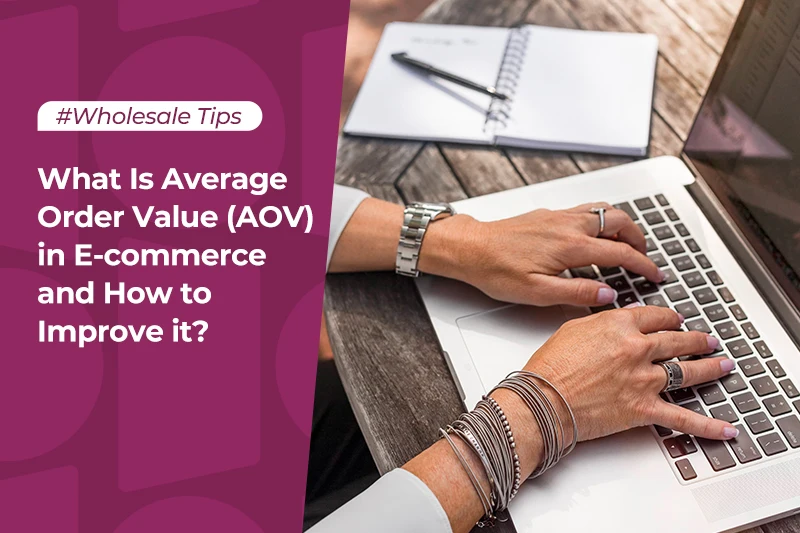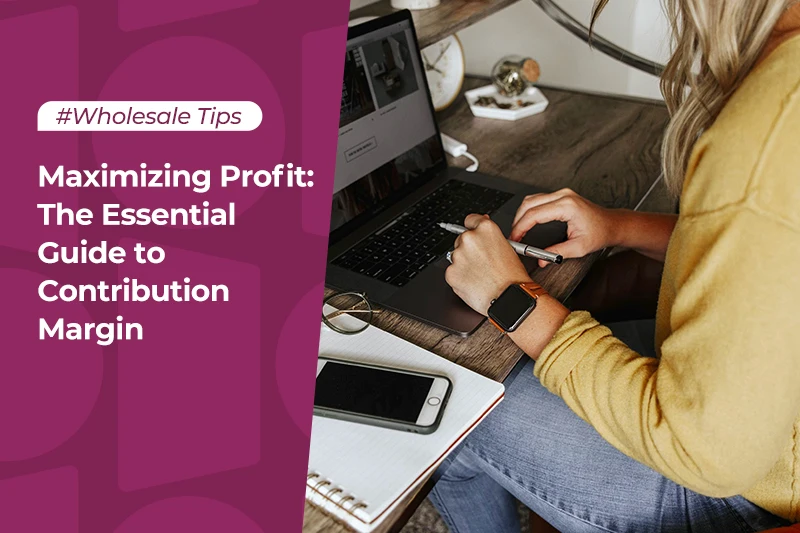4 challenges you may face for wholesale distribution

Wholesale distribution in any industry plays a crucial role in improving the flow of processes in a distribution channel. From manufacturers to wholesalers to retailers, there are lots of processes that a product has to go through before it reaches the end consumers. Wholesalers play a major role in keeping these processes efficient and transparent1.
In spite of its crucial role, wholesale distribution is facing increasingly complex challenges in the ever-changing marketplace. If you are thinking of becoming a wholesale distributor (or wholesaler for short), you are probably keen on learning about these challenges so as to make an informed decision. So, in this article, we’re going to explore these challenges in extensive detail and give you, the wholesale distributor, tips on how to get ahead in today’s wholesale distribution industry.
But, first, let's get a clear idea of what wholesale distribution is.
Table of Contents
What is wholesale distribution
Wholesale distribution is the act of purchasing large amounts of products from a producer or manufacturer and then selling them to retailers or other businesses in bulk. The wholesaler directly purchases from the manufacturer in bulk. Then the wholesaler stores the products in a physical warehouse and distributes (or resells) them to its customers. They are also responsible for keeping track of their inventory, accepting clients’ purchase orders, and handling transportation for shipments1.
The wholesale distributor can distribute the products under their own brands. This makes wholesale product distribution an easy way to build a company’s brands. Manufacturers can also be their own wholesalers1.
How wholesale distribution works
In simple terms, a wholesale distributor is the middleman between the manufacturer (who produces the products) and the retailer (who sells those products). Wholesalers that use drop shipping will ship goods directly to the end customers, as directed by the drop shipping sellers2.
Nowadays, some distributors may be associated with the manufacturers under the same companies. Other distributors may have partnerships with the manufacturers2.
The “big idea” behind wholesale distribution is purchasing high-demand products at lower prices. After all, that’s how they make their money. Low prices can be achieved when the volume is high. By buying products in bulk, wholesale distributors can usually get better deals from manufacturers. In most cases, manufacturers don’t have the resources or channels to sell a lot of products. Rather than investing time, money and effort trying to sell their products, they can reach out to wholesale distributors, give them good prices and sell them in large quantities at once2.
Wholesale distribution companies know how to sell to retailers for slightly higher prices and keep the differences as profits. This is why you’ll find wholesale distributors in clothing, electronics, furniture, office equipment, and groceries2.
Four challenges for a wholesale distributor
Challenge #1: Disintermediation
As many of us have noticed, more and more manufacturers and retailers are cutting distributors out of the equation and using their own networks to get products to their customers. In fact, this is a practice used by big-box retailers for many years. The main benefit for both these parties is financial gain or bigger profit margins, as the manufacturer can now sell their goods at higher prices and the retailer can also get them cheaper than they would from a wholesale dealer.
One of the major drivers behind this shift is technology because retailers can just go online to wholesale marketplaces and get in touch with manufacturers directly. However, technology is also the solution to this seemingly intimidating problem.
To maintain the market share, you, as a distributor, must now try to offer services that a manufacturer simply won’t be able to, such as VMI (Vendor Managed Inventory) services which automate elements of distribution, and thus saving the retailers valuable time and money.
These automated elements will include the order lifecycle itself, in which the retailer simply needs to specify reorder points in advance and the distributor delivers the orders as requested. This means the retailer will never run out of stock and get a number of other benefits which only a wholesale dealer is able to provide.
Challenge #2: Inventory management
Inventory management issues are not something new in the distribution industry, but we’re yet to come up with a more cost-effective solution to this highly complex problem.
If you’re thinking of becoming a wholesale distributor and aren’t sure what inventory management really means, it’s basically the process of keeping track of all the goods coming in and going out of your warehouse.
This process is essential in the wholesale distribution industry because without it, you will have no way of knowing how much stock is left in your warehouse and how much you’ve sold out. If you don’t know how much stock you have left, you can’t restock your supplies in time, which may cause delays and frustrate your customers.
Traditionally, inventory management was mostly done in two ways: Either manually by counting each item (which gets out of hand very quickly) or semi-automatically by using RFID tags, which are too expensive for most distributors.
Nowadays, however, software tools are gradually taking over. There are plenty of programs like Ordoro, which provide a cost-effective and efficient solution to the age-old problem of managing inventory.
The great thing about this type of software is that it can track items in real-time and upload this data to a server in the cloud, meaning that you can stay on top of your inventory needs no matter where you are in the world. Using other artificial intelligence tools, modern inventory management tools can even forecast when certain stocks will run out and how much of them you’ll need for the coming weeks or months.
Challenge #3: New technologies
In order to stay competitive in the wholesale distribution industry, you need to adapt to new technologies. However, in order to enjoy the benefits of these technological advancements, you may have to invest a lot of money and time in acquiring and learning the related technologies.
The good news is that not every new technology is as expensive to implement as radio frequency identification (RFID) tags. RFID tags allow sellers to track inventory accurately without needing employees to type in each item, increasing efficiency and reducing data entry errors, but they can cost you up to $50 each!
When it comes to adapting to new technologies, you can start with small steps that will make things easier for both you and your customers. For instance, you may get a piece of cloud-based inventory management software to manage your inventory more cost-effectively.
As the world becomes more and more reliant on the internet, more and more companies are expanding their business online. The same goes for the B2B industry. A report by Grand View Research mentioned that the global B2B e-commerce market size was valued at USD 5.7 trillion in 2019 and is projected to increase at a compound annual growth rate (CAGR) of 17.5% from 2020 to 20273. The COVID-19 pandemic, which started in 2020, has made this trend even more irreversible.
If you decide to set up your online wholesale store, you have a few options. You can choose a marketplace platform like Amazon Business, Etsy Wholesale or Alibaba, or you can choose to set up your own B2B ecommerce site.
Depending on your business model, you may choose a specific marketplace. For example, Amazon Business is a great choice if you’re a distributor or manufacturer selling to businesses in the United States. On the other hand, Alibaba is best suited for large-scale manufacturers looking for economies of scale. Finally, Etsy Wholesale is best suited for artists and designers who make their own products and then sell to retailers.
If a B2B marketplace isn’t right for you, you can look into setting up your own B2B e-commerce site. The benefit of a marketplace is that it has an existing audience to give your products higher visibility, yet you’re competing with many other products. If you use your own site, you’ll need to promote it using channels like social media or your offline sales channels. However, running your own wholesale store means that you’ll have full control over how your products are viewed by prospective buyers.
Challenge #4: Demanding customers
Perhaps the biggest challenge distributors are facing is that customers are getting more and more demanding with each passing year. The biggest reason behind this is that the millennial generation, which practically grew up in the digital age, has finally reached the ages where they’re in commanding positions at businesses around the world.
Since the millennial generation grew up ordering things online and browsing the internet on their cell phones, they’ve become used to a certain standard of customer services that B2C companies have been providing for years. The industry is changing slowly and businesses will certainly have to adapt to this new trend if they want to survive.
To cope with this challenge, you need to have a modernized website with all the features a B2C buyer wants. For instance, you should consider integrating a chatbot (also called interactive agent, virtual assistant, and conversational interface) into your website. This way, your customers can ask questions and get instant answers at any given moment, which is important because buyers are active 24/7, and customer service also needs to be available 24/7. A chatbot also frees up valuable human time and saves your business money.
Selling on Alibaba.com
Founded in 1999 by Jack Ma, Alibaba.com is one of the largest B2B marketplaces in the world4. The online marketplace has been helping wholesale businesses reach buyers from around the world for over two decades. Whether you are an experienced online trader or are still learning to trade online, you can use the marketplace to trade online 24 hours a day, 7 days a week.
The following are some of the most important reasons why so many wholesalers have chosen Alibaba.com.
- They can reach millions of business buyers globally. Thanks to the huge popularity of the marketplace, they can get their products in front of 20 million+ active buyers who make 280,000+ inquiries daily from 190+ countries and regions4.
- They can get discovered and increase sales with intelligent tools. They can manage their growth with analytics tools, customer data, a custom digital storefront, targeted advertising, and more4.
- They have access to professional services. A team of experts guides them in each step of their onboarding process and helps them drive long-term success. They get 24/7 online support in multiple languages across the globe to ensure that their voices are heard and their needs are met5.
- They can gain easier access to the huge China market. China is not only the most populous country but also the second-largest economy and the largest e-commerce market by value of sales in the world. As Alibaba.com is based in China and is the most popular B2B wholesale marketplace in China, it is the ideal choice for those wholesalers that are looking to break into or boost their shares of the China market.
So, if you are still wondering which marketplace to use to start your online wholesale journey, we highly recommend that you give Alibaba.com a go. To learn how to start selling on Alibaba.com in a few simple step
References:
1. https://www.bathbombbootcamp.com/importance-of-wholesale-distribution.html
2. https://www.acceleratedanalytics.com/blog/2019/09/11/wholesale-distribution
3. https://www.grandviewresearch.com/industry-analysis/business-to-business-b2b-e-commerce-market
4. https://seller.alibaba.com/why
5. https://seller.alibaba.com/services
Start your borderless business here
Tell us about your business and stay connected.
Keep up with the latest from Alibaba.com?
Subscribe to us, get free e-commerce tips, inspiration, and resources delivered directly to your inbox.














